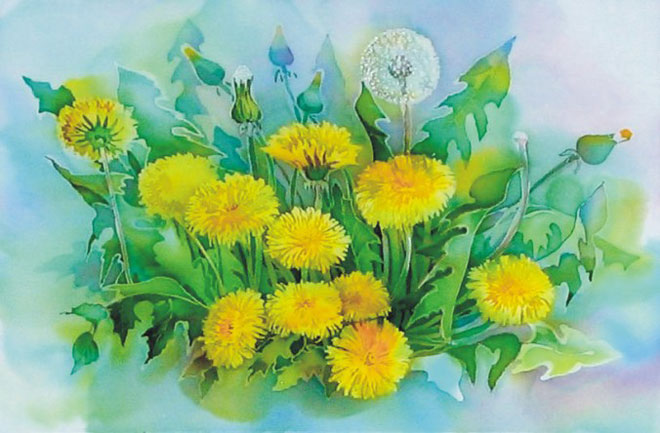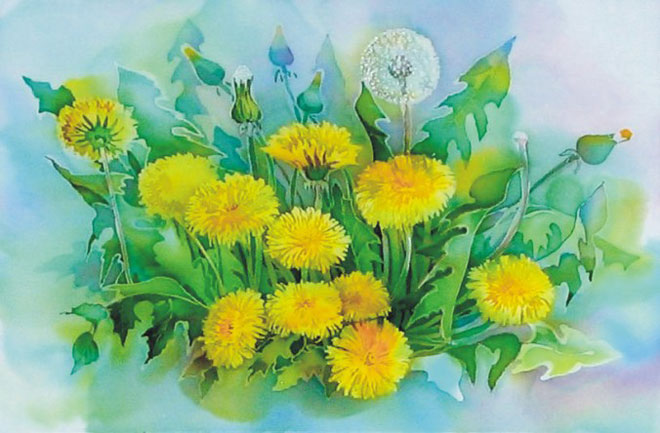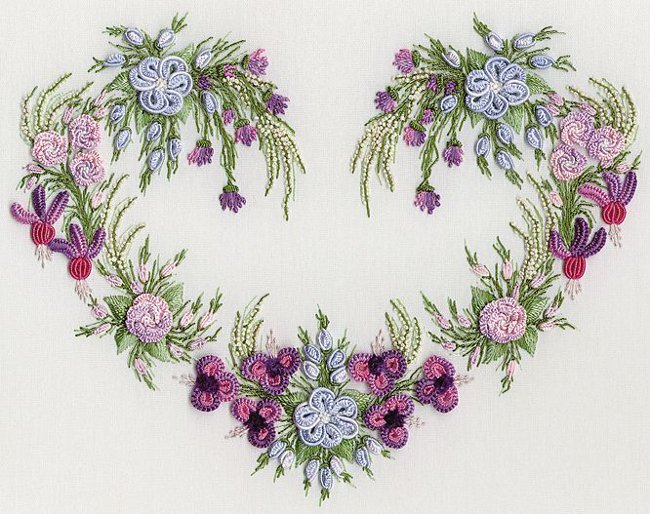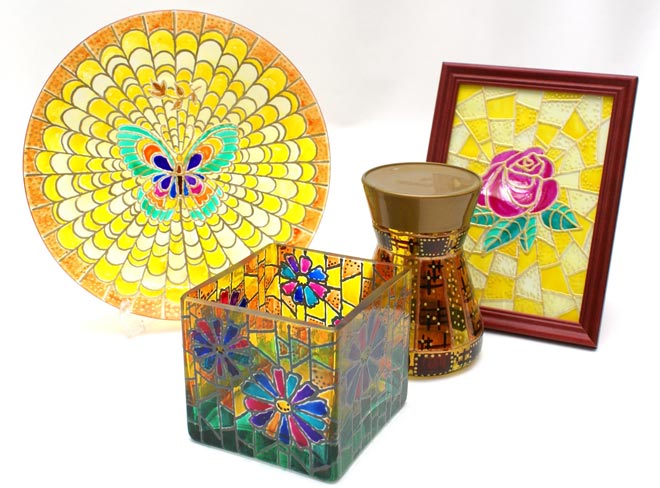Batik

The art of hand-painted various fabrics is called batik (batik). This Indonesian word is formed from ba - "cotton fabric" and tik - "point" or "drop". Initially, the batik called the special technology of dyeing and decorating the fabric, first applied on the island of Java.
To date, batik is called anyways of hand-painted fabrics. As a rule, they paint silk and cotton fabrics. You can paint scarves and scarves, decorate with clothes, and also make decorative panels and whole paintings in batik technique. A characteristic feature of the batik is the application of a special of the reserve - composition, which prevents the penetration of paint into the fabric. The reserve is usually drawn around the outline of the picture.
The most popular hand-painted techniques are cold, hot and knotty batik. These techniques differ in the method of applicationdyes on the fabric. When cold batik uses a cold reserve, the dye fills only the space inside the backup line, so that the picture acquires a graphic clarity. Reserve after staining is not necessary.
The hot batik technique uses a hotmelted wax or its substitute - paraffin. Wax is applied using a special tool - chanting. This tool is a small vessel with a thin nose, fixed on a wooden handle.
For painting in the technique of knot batik fabrictied with special knots, and then dipped in a dye (hot or cold). After the fabric has colored, in place of the nodules, we get fancy stains. This technique is often used for painting large cloths, for example, coverlets.
Any person can draw up the fabric manually,even if he does not have artistic skills. Even the most uncomplicated patterns look very decorative, besides, for beginners there are special sets in which the contour of the drawing is already applied to the fabric.
Start the work with the selection suitable fabric. For beginners, a simple white cotton cloth is recommended, since silk behaves more "whimsically" - certain skills are needed to correctly apply the dye to it.
The selected piece of fabric should not be too large, it is enough 45x45 cm. wash the cloth before the beginning of the painting. Then the fabric is needed tighten and fasten on a special stretcher, beginners can use the usual embroidery hoop. The fabric should be tight and tight.
Then you can embark on the necessary pattern. The contours are applied with a special waxpencil, which is easy to wash after washing. You can also pre-draw a contour on a sheet of paper ink or a felt-tip pen. Then put the picture under the cloth and circle the contour with a reserve.
The reserve must necessarily impregnate the fabric well,otherwise he will skip the paint. The density of the reserve should be such that it is well absorbed into the tissue, but does not spread. The reserve line should be continuous, it is easy to check with water. If a drop of water has leaked out of the contour, it is necessary to look for a "hole" in the line.
After the drying of the reserve, it is possible to proceed to the dyeing of the fabric. For painting, paint should be chosen,designed for painting on this particular fabric, or universal paints, suitable for any fiber. Be sure to read the instructions, because different dyes have different drying times and are differently fixed on the fabric.
The dye, if necessary, is diluted with water andusing a round brush with a sharp tip (protein, columns) is applied to the surface of the tissue inside the reserve lines. For a smooth divorce or for priming the background, a wide brush-sponge is used. Stains and blots should be removed as quickly as possible with a cotton swab dipped in alcohol solution. However, it should be remembered that alcohol repels water and the tissue site in this place will turn lighter.
Salt, unlike alcohol, attracts water. therefore if you sprinkle salt from the paints of silk salt, you get the original effects. Also, various effects can be obtained with beads, beads.
When multicolored painting should be layer-by-layer. Those. First the necessary areas are painted in one color, then on those areas where this color should be preserved, the reserve is applied and the fabric is painted again. It is important to observe the rule: paints are applied from lighter to darker, because they are mixed during staining. Each next layer of dye should be applied to the dried fabric.
After finishing the painting in the technique of hot batik, the wax must be removed. To do this, the fabric is placed between sheets of paper (newspapers, napkins, etc.) and ironed with a hot iron. If necessary, replace the paper.
Completed work formulate a baguette or, if it's a scarf or scarf, make out the ends of the fabric.














